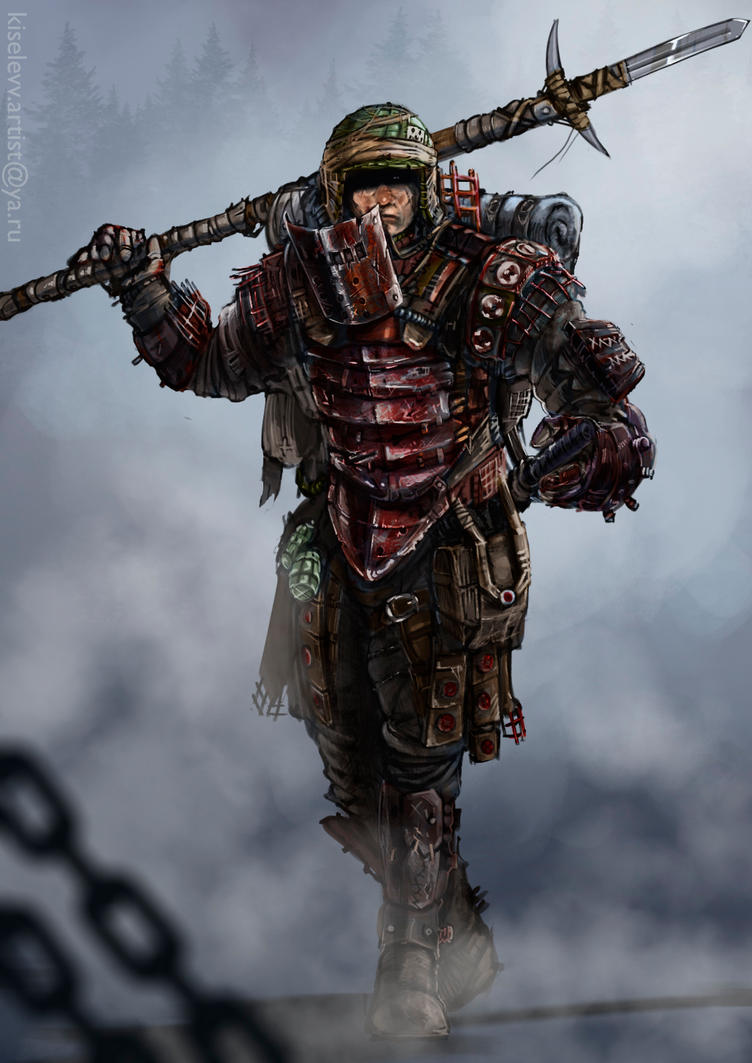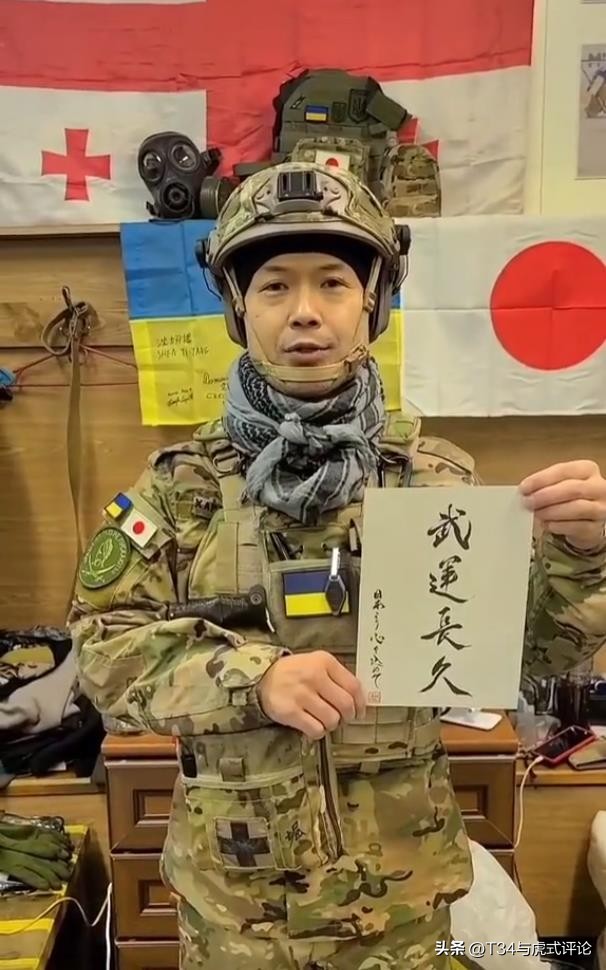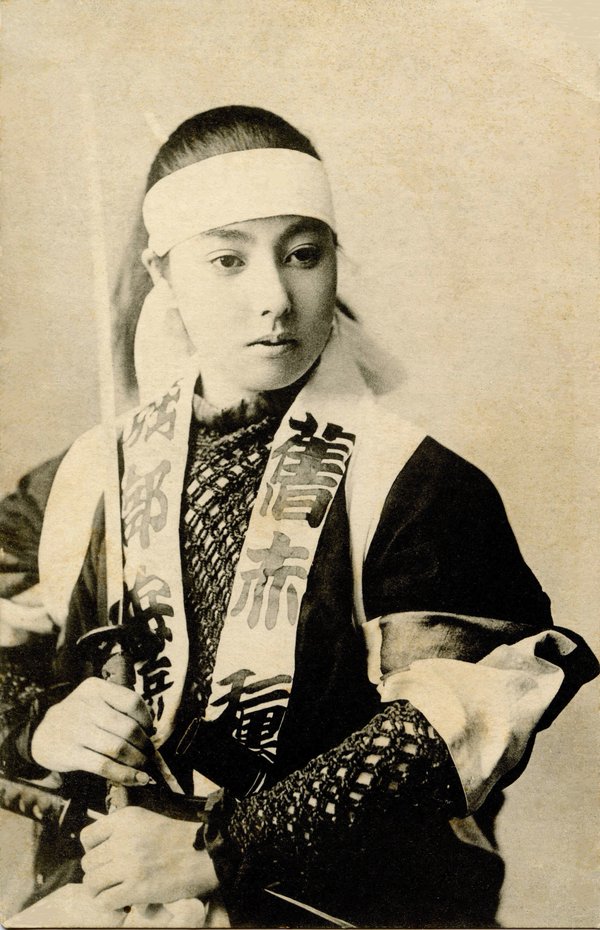
Wasteland Japan Mercenary by SeeleDS on DeviantArt
Updated on August 19, 2019. A ronin was a samurai warrior in feudal Japan without a master or lord — known as a daimyo . A samurai could become a ronin in several different ways: his master might die or fall from power or the samurai might lose his master's favor or patronage and be cast off. The word "ronin" literally means "wave man," so.

samurai, Donfoo . Samurai rpg, Samurai guerreiro, Ilustrações
A ninja or shinobi was a covert agent, mercenary, or guerrilla warfare expert in feudal Japan. The functions of a ninja included siege and infiltration, ambush, reconnaissance, espionage, deception, and later bodyguarding and their fighting skills in martial arts, including ninjutsu. Their covert methods of waging irregular warfare were deemed dishonorable and beneath the honor of the samurai.

Samurai Warfare Samurai, Japanese history, Samurai warrior
The Japanese mercenary warriors are not reported in Japan and no one knows about it, but the English and Chinese media outlets are reporting the tragedy. This is what the post looked like on TikTok at the time of writing: (Source: TikTok screenshot taken on Wed Aug 2 14:15:33 2023 UTC)

72927919 Warriors illustration, Historical warriors, Samurai artwork
The crossword clue Medieval Japanese mercenary warrior with 5 letters was last seen on the September 13, 2023. We found 20 possible solutions for this clue. We think the likely answer to this clue is NINJA. You can easily improve your search by specifying the number of letters in the answer. See more answers to this puzzle's clues here .

Pin on Bushi (Samurai)
The Lost Samurai reveals the greatest untold story of Japan's legendary warrior class, which is that for almost a hundred years Japanese samurai were employed as mercenaries in the service of the kings of Siam, Cambodia, Burma, Spain and Portugal, as well as by the directors of the Dutch East India Company. The Japanese samurai were used in dramatic assault parties, as royal bodyguards, as.

fanart Samurai art, Samurai artwork, Character design
The Crossword Solver found 30 answers to "Medieval Japanese mercenary warrior (5)", 5 letters crossword clue. The Crossword Solver finds answers to classic crosswords and cryptic crossword puzzles. Enter the length or pattern for better results. Click the answer to find similar crossword clues . Enter a Crossword Clue Sort by Length

ArtStation Mercenary, Work Man Character portraits, Female character design, Game character
A mercenary, also called a merc, soldier of fortune,. In 1615, the Dutch invaded the Ai Island with Japanese mercenaries. 19th. The word "bunt" itself translates to Warrior/Mercenary, this community later elevated itself as the rulers of the land, several powerful dynasties emerged from this community, The most notable dynasty being the.

Pin on Ninja art
6. The Varangian Guard. Scylitzes chronicle. The descendants of Norsemen who originally ventured south as pirates and traders, the Varangian Guard were a band of Viking mercenaries paid to serve.

Mercenary Garage Samurai Girl
A phenomenon born of rivalries The first monk-soldiers appeared in the 10th century in Japan, especially during rivalries between the two branches of the Tendai sect of Buddhism. Both located in the city of Otsu, at the level of Mount Hiei, they were the teachings of the Enryaku-ji and Mii-dera temples.. Subsequently, the Todai-ji and the Kofuku-ji of the city of Nara also constituted groups.

NEO JAPAN 2202 KIKAI YOHEI by johnsonting on deviantART タクティカルギア, ネオジャパン, ボディアーマー
Possible answer: N I N J A Did you find this helpful? Share Tweet Look for more clues & answers Sponsored Links Medieval Japanese mercenary warrior - crossword puzzle clues and possible answers. Dan Word - let me solve it for you!

Japanese mercenaries show their martial arts for a long time in Ukraine it is ambition and
The history of Japan during the period from 900 to 1600 CE "is" a military history. The "total war" atmosphere that spanned this eight-hundred-year period forced the entire population into participating. In order for a researcher to grasp the Japanese propensity for war, it is important to understand the origins of the Japanese people.

Female Samurai Warriors Immortalized in 19th Century Japanese Photos Open Culture
Ashigaru ( 足軽, "light of foot") were infantry employed by the samurai class of feudal Japan. The first known reference to ashigaru was in the 14th century, [1] but it was during the Ashikaga shogunate ( Muromachi period) that the use of ashigaru became prevalent by various warring factions. [2] Origins

Pin by varangian_Arcana on Japanese History Japanese art ink, Japanese history, Ancient warriors
Yamada Nagamasa's mercenary band had great adventures on Siam, and Yamada himself ended up in Siam's politics before getting assassinated. In 1615 group of 500 Japanese participated in an attack on the Dutch Maluku Islands, where the rowdy group not only gave information to the Dutch but helped them in the fight, and ended up being abandoned by.

Japanese mercenary in Ukraine японский наемник в Украине Flickr
The samurai were not mercenary warriors, roaming Japan and fighting for whatever warlord would pay them. They were bound to a specific lord or daimyo, and bound to their communities by duty and honor. This code of honor is known as bushido, and comes from the word bushi, which means "warrior." The Japanese word do means "the way." So bushido.

Mercenary Captain, SeokJae Jang Fantasy character design, Barbarian, Concept art characters
May 18, 2022 Samurai was once a term to describe aristocratical warriors known as "bushi". They're members of a powerful military caste that rose to prominence in the 12th century, when Japan was on its way to military dictatorship (shogunate). The warriors dominated Japanese politics, economy and society up until the nineteenth century.

ArtStation male mercenary, Jinju Choi Fantasy character design, Character portraits, Concept
The first chapter deals with the period from 500 to 645 and examines the indigenous origins of Japan's warrior class. The second covers 645 to 770 and explains how, as a part of a wave of cultural borrowing from mainland Asia, the Japanese state adopted a Chinese system of military organization. Chapter Three details how these Chinese-style.